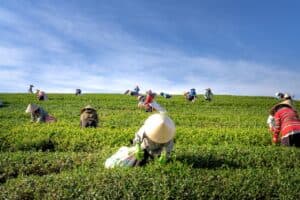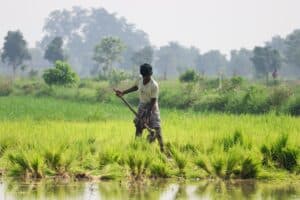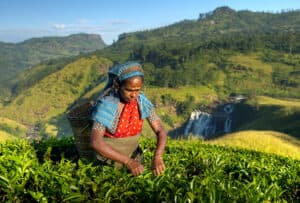Realizing the right to land is critical to addressing current interlinked crises
Land along with other natural resources are the very basis of life for communities worldwide, who are at the same time the best guardians of those ecosystems. However, corporate control over land and natural resources is at the core of today’s dominant economic model, which has triggered a new wave of land grabs, speculation, and land concertation, leading to massive dispossession and ecosystem destruction. People’s organizations have been fighting for the right to land, thus achieving some important milestones such as the Tenure Guidelines. However, in the face of the multiple interconnected crises that are affecting millions worldwide, ensuring the equitable distribution of land needs to be at the center of public and climate policies.
Land concentration is at the core of the multiple environmental, social and economic crises we face today. Over the past two decades, a global land rush has led to high levels of accumulation of wealth in the hands of a few and the increasing power of financial actors, leading to massive dispossession of communities from their territories, ecosystem destruction and unsustainable levels of land concentration around the world.
To give some numbers, in the last ten years, international investors have carried out at least 1,865 large-scale land acquisitions (LSLC) for agriculture production alone, which comprise an area of 33 million hectares, the size of Italy or the Philippines. Moreover, recent research confirms what organizations of small-scale food producers and Indigenous peoples have denounced for a long time, namely that land inequality is even higher than official statistics indicate. 1% of farms worldwide control 70% of the farmland, while 50% of the poorest rural population use 3% of the land. Large-scale industrial agriculture feeds a global food system controlled by transnational corporations, which has failed to prevent consecutive food crises, leading to increasing levels of hunger and malnutrition.
Historically, land and natural resources have been highly disputed and powerful actors have consistently accumulated land and natural resources in order to enforce domination, exclusion and exploitation, such as in the case of colonialism. However, the current levels of land concentration are a key indicator of profound structural inequalities, oppression and discrimination in our societies, which are at the core of the current interconnected crises.
Furthermore, land, along with natural resources such as oceans, rivers and forests, are the very basis of life for peasant communities, Indigenous Peoples, small-scale fishers, pastoralists, and forest people. They do not only provide means of sustenance through food production, but fulfil crucial social, cultural, spiritual and ecological functions. At the same time, these communities play a key role in sustaining localized food systems, which feed more than 70% of the world’s population; and make a crucial contribution to protecting the ecosystems, cooling the planet and conserving biodiversity.
The current levels of land concentration are a key indicator of profound structural inequalities, oppression and discrimination in our societies, which are at the core of the current interconnected crises.

Credit: Quang Nguyen Vinh

